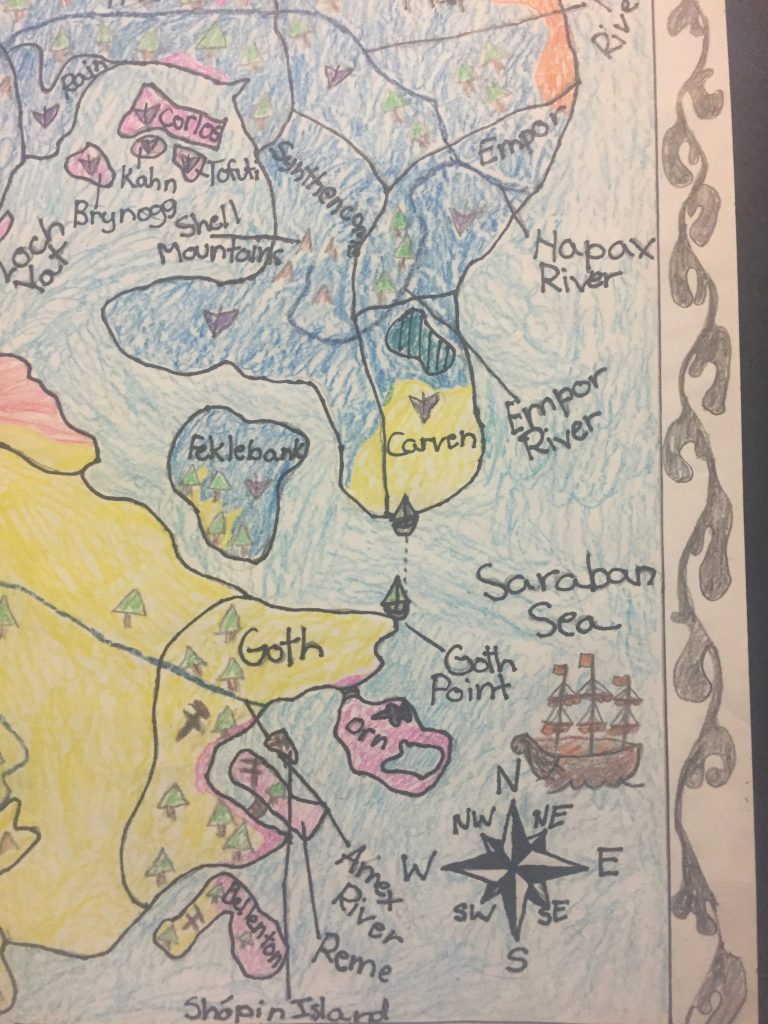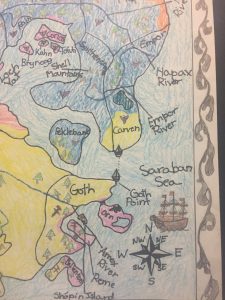Hyla Stories
Student Curiosity Drives Deeper Exploration
September 26, 2017

The hallway outside the Humanities room has been transformed with the colorful cartography of the fictional worlds invented by 6th graders. The maps create a gallery of student enthusiasm, teacher responsiveness to student curiosity, and the incredible work that results. 

To establish a vision of the world, and to expand student understanding of their place in it, Melissa began Humanities class with an introductory geography unit, including the seven-model continent plan as well as alternate views of the world. Students then moved into a study of borders to understand the conditions and factors that influence them, such as geography, colonization, war, religion, and language. Melissa drew them further into the study by asking “who gets to decide?” Students then consider the geopolitical forces that influence borders and begin to understand that the lines drawn on maps are often contested. They also examined the unique challenges of maritime borders by asking “who owns the water” to understand the resources (oil, fish, etc) that can cause disagreement.
Students were asked to invent their own continent with specific features (2 oceans, 6 languages, 3 religions, 2 rivers, etc.) and draw it as a map with a legend and neat lines (the artistic border of a map). Melissa planned to end the unit with this project, but was struck by student enthusiasm and curiosity about their continents. “They couldn’t give me a map without also giving me the story behind it,” Melissa explains. “They all already had back stories to explain their map choices. Their minds went far beyond the physical features of their continents into the histories.” Melissa knew that their enthusiasm would carry them deeper, so she kept going. With the freedom to stretch the curriculum in response to student engagement, she added a unit by asking students to create mythology for their continents in a written piece (complete with characterization and traditional mythological elements).
Next students will look at local boundaries and the types of disagreements that arise with neighbors, and begin a new writing assignment on the pros and cons of borders. Students will also look at the concept of their own personal boundaries and borders. Melissa’s goal with this unit is to help students become more self-aware so they can make friends and connections. Academically, her goals is to expand student understanding of their place in the world, introduce them to the complexity and nuance of the lines we see on maps, and establish a framework for upcoming units on Myanmar and the Holocaust.

